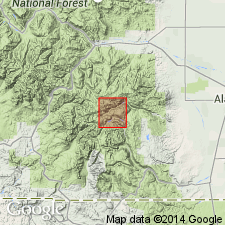
- Usage in publication:
-
- Fisher quartz latite*
- Modifications:
-
- Areal extent
- AAPG geologic province:
-
- San Juan basin
- San Juan Mountains province
- San Luis basin
Summary:
(E.S. Larsen's 1917 provisional and field names for Summitville quadrangle), p. 20, 23-33. Fisher quartz latite. Overlies Piedra formation of Potosi volcanic series and underlies Hinsdale volcanic series. [Age is Miocene(?).]
Source: US geologic names lexicon (USGS Bull. 896, p. 733).
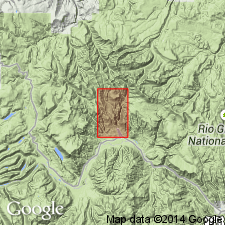
- Usage in publication:
-
- Fisher quartz latite*
- Modifications:
-
- Principal reference
- AAPG geologic province:
-
- San Juan Mountains province
Summary:
Fisher quartz latite. Is 0 to 3,000+ feet thick in Platoro-Summitville district, where it underlies Hinsdale volcanic series and overlies Piedra formation of Potosi volcanic series. In Creede district it is 0 to 100 feet thick, the Hinsdale volcanic series is absent, and the Fisher is separated from Piedra deposits by 0 to 2,000+/- feet of lake beds named Creede formation. [Age is Miocene(?).]
Named from exposures in vicinity of Fisher Mountain, [Spar City 7.5-min quadrangle, Mineral Co.], southwestern CO.
[Additional locality information from USGS historical topographic map collection TopoView, accessed February 27, 2013.]
Source: US geologic names lexicon (USGS Bull. 896, p. 733).
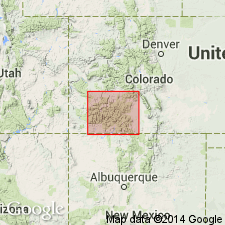
- Usage in publication:
-
- Fisher latite-andesite*
- Modifications:
-
- Redefined
- Dominant lithology:
-
- Latite
- Andesite
- Breccia
- AAPG geologic province:
-
- San Luis basin
Summary:
Changed name to Fisher latite-andesite. [Age is Miocene(?).]
Source: US geologic names lexicon (USGS Bull. 896, p. 733).
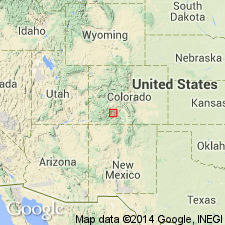
- Usage in publication:
-
- Fisher Quartz Latite*
- Modifications:
-
- Revised
- AAPG geologic province:
-
- San Juan Mountains province
Summary:
Pg. D61-D62. Fisher Quartz Latite. "The rocks in the type area of the formation on Fisher Mountain were erupted after the last main subsidence of the Creede caldera and followed doming of the caldera core. We therefore restrict the Fisher Quartz Latite to lavas of this age. Some Fisher flows around the Creede caldera underlie the Creede Formation, others intertongue with it, and still others appear somewhat younger; the bulk of the Fisher Quartz Latite, however, appears to have been erupted concurrently with Creede sedimentation." Consists of coarsely porphyritic lava, predominantly quartz latite but with some rhyolite. Plagioclase, biotite, and clinopyroxene are the most abundant phenocrysts. Age is considered middle or late Tertiary.
(See also Ratte and Steven, this vol., art. 131, p. D49-D53.)
Source: Publication.
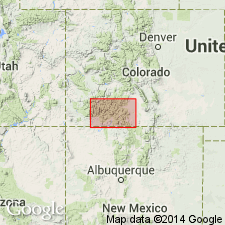
- Usage in publication:
-
- Fisher Quartz Latite*
- Modifications:
-
- Age modified
- AAPG geologic province:
-
- San Juan Mountains province
Summary:
Age changed from Oligocene --to-- late Oligocene.
Source: Changes in stratigraphic nomenclature, 1974 (USGS Bull. 1405-A, p. A8-A9).
For more information, please contact Nancy Stamm, Geologic Names Committee Secretary.
Asterisk (*) indicates published by U.S. Geological Survey authors.
"No current usage" (†) implies that a name has been abandoned or has fallen into disuse. Former usage and, if known, replacement name given in parentheses ( ).
Slash (/) indicates name conflicts with nomenclatural guidelines (CSN, 1933; ACSN, 1961, 1970; NACSN, 1983, 2005, 2021). May be explained within brackets ([ ]).

